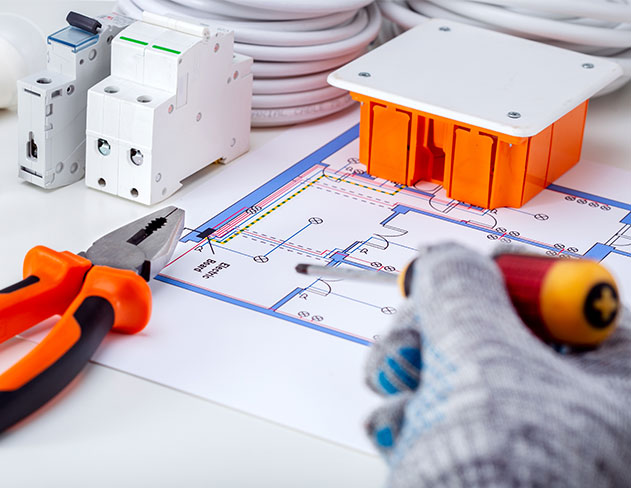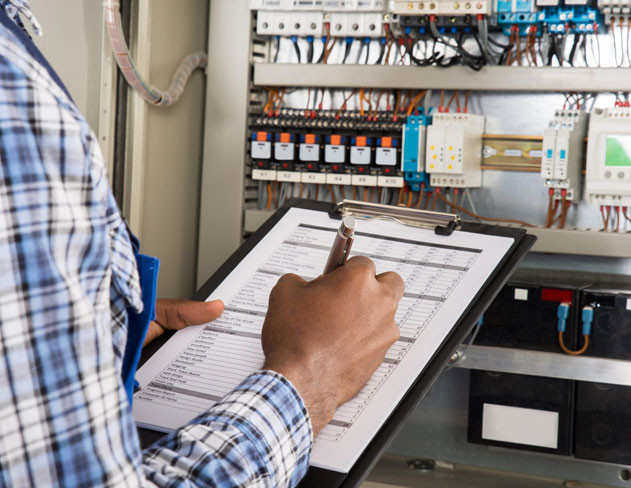What Are the Warning Signs of Faulty Electrical Wiring in Your Home
It’s essential to have safe electrical wiring in your home. If the wiring is old or damaged, it can lead to electrical shocks and electrical fires. It’s important to ensure your property has a Satisfactory EICR status to ensure that the entire electrical installation is safe.
When is it time to replace the electrical wiring in your home?
If your home is an old building and hasn’t had the electrical wiring replaced in under 30 years, then it might be time to have the wiring replaced. This depends on several factors that must be checked by one of our qualified electrical inspectors who will be able to advise you.
- Has the wiring visually degraded?
- Does the wiring pass insulation resistance tests?
- Is cpc/earth continuity present and satisfactory?
- Which type of cable is it?
There are various types of cable that have been used to wire the homes in London and England over the years:
PVC sheath and copper core with a cpc/earth
The most modern type of cable. A recent variant of this cable is LSF (Low Smoke & Fume), which in event of a fire will give off less dangerous smoke and fumes when it is burned.
PVC sheath and copper core with no cpc/earth
This type of cable was used for the wiring of lighting circuits in some properties but was phased out in the 1990s, as it does not allow for the use of metal class 1 light fittings and switches. If you have this wiring on your lighting circuits, you can only have insulated PVC light fittings and switches to ensure safety and your property would carry a C3 recommendation for improvement to rewire the non-earthed cables.
PVC sheath and aluminium core with or without cpc/earth
This type of cable was phased out in the 1980s and the aluminium core is a visual sign that the wiring is old. It can be fully compliant if the insulation tests of the wiring are satisfactory and there is no visible degradation. If there is no cpc/earth within the cable then like with the copper core variant above, no class 1 metal fittings can be installed and a C3 recommendation would apply.
Black Rubber sheath and aluminium core with or without cpc
Rubber sheathed cable is very old and dates to around the 1970s, in most circumstances it should be replaced for modern cabling. It is unlikely that the cable would pass insulation resistance tests, however if the tests are satisfactory and there is no sign of degradation then the wiring can remain, but this would carry a C3 recommendation to be replaced.
VRI cable
VRI cable is extremely old, dating to the 1950s and must be contained within conduits. Like with the black rubber sheathed cable, in most circumstances it must be replaced for modern cabling as soon as possible. It is technically allowed to remain if the insulation resistance tests are satisfactory, there are no signs of degradation, and it’s containment system is adequate, but it is always recommended to be replaced.
Other Factors
There are some warning signs to look out for such as flickering lights and tripping consumer units or blowing fuses. These warning signs indicate that it’s time to get a qualified electrical inspector to test your wiring.
If you are too reliant on extension cables, you may want to look at rewiring your house so you can have more plug sockets. This will also ensure that you’re not at risk of overloading an extension cable, which could cause electrical problems or even an electrical fire.
How can I find a loose electrical connection?
At Hexo, we would recommend getting a qualified and approved inspector to look over your property to find electrical faults and loose connections, rather than potentially risking your safety to try and find a loose electrical connection as a DIY job.
We test the circuits in your property to check the continuity of the cables which helps to check for loose connections. We can also utilise thermographic imaging to find loose or corroded connections.
If you are worried about loose electrical connections we can install Arc detection, which is a safety device that will trip off/cut the power if an electrical arc develops.
How can I check if an electrical wire is live?
Hexo does not recommend that you check if electrical wires are live or not. Instead, we recommend that all electrical tests and work should be carried out by trained professionals to avoid any safety risks encountered during a DIY project.
At Hexo, we use a non-contact voltage tester and volt meters to test electrical current and voltage to verify if the electrical wiring is live..
How can you check for bad electrical wiring in your home?
You should take faulty electrical wiring extremely seriously. Faulty wiring could lead to house fires, loss of life and serious accidents. Here are five tell-tale signs that something might be wrong with your wiring.
If you notice any of these signs, then it’s time to book a domestic EICR to check your wiring.
Is your fuse box tripping?
Fuse boxes and consumer units are designed to disconnect the electricity if a circuit becomes overloaded or develops a fault. A consumer unit with an RCD is much safer than a fuse box and is the modern safety standard. If you notice a loss of power, then you should call a qualified electrician to investigate.
Are your lights often dimming, flickering, or buzzing?
If your lights are dimming/flickering/buzzing then it could be a sign that your wiring needs to be replaced, but it could also be a sign that you just have a faulty light switch or dimmer light switch. Again, this would need investigation to be able to ascertain the cause of the problem.
Is your electrical wiring frayed or chewed?
This kind of problem can be caused by rodents, amateur electricians, or pets, and isn’t something to be overlooked. Chewed or damaged wiring presents a serious electrical shock and fire hazard. You should seek urgent assistance from a qualified electrician without delay if you notice frayed or chewed electrical cables. Our Domestic EICR service will provide an electrical assessment of any damage.
Is there any smoke, scorching or discolouration around your plug sockets?
If you notice any smoke, scorching, or discolouration around your plug sockets it’s a sign of either an overheating appliance, or a problem with your electrical wiring or the socket outlet.
Can you smell burning?
If you can smell burning and you locate it to a part of your electrical installation like a socket, switch, or fuse box, it’s a sign that fire damage may have already started in your property. It’s essential to call out an electrician immediately and in most cases the fire service.
What can Hexo offer?
We can test your electrical wiring in your home at competitive rates. During our domestic EICR, if we find any electrical problems in your home, we automatically give you a quote for any remedial work to ensure that your home is electrically safe.
If you are a landlord or business owner, we also offer PAT testing for rental properties and businesses.

